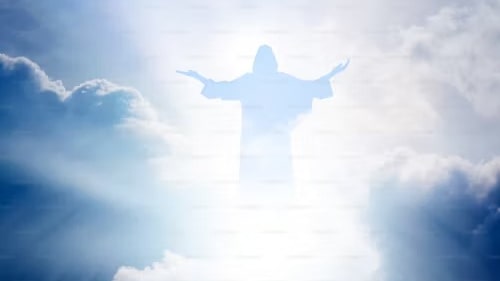The death of a pope and the subsequent arrival of a new one often symbolize profound shifts in both spiritual and temporal realms. These transitions act as pivotal moments, marking changes in the leadership of the Catholic Church and, in a broader sense, offering symbolic reflections of societal, cultural, and historical transformations. The papacy, as one of the oldest continuous institutions in the world, stands as a mirror to the evolving spiritual, social, and political landscape. Through the symbolism of the papal transition, one can perceive the shifting epochs, signals of the times, and the changing face of the world—both in the context of faith and broader secular life.
The Symbolism of Papal Transitions: A Shift in Era
The death of a pope marks the end of an era, often symbolizing the conclusion of a phase in the Church’s journey, defined by the unique leadership style, theological emphases, and moral priorities of the deceased pope. The arrival of a new pope signals the start of another era, one that may introduce a different vision for the Church’s role in the world, its approach to doctrinal matters, and its relationship with both internal and external forces.
For instance, the death of Pope John Paul II in 2005 marked the conclusion of a papacy that spanned 26 years and was characterized by a strong stance on social justice, a commitment to ecumenism, and vigorous opposition to the spread of communism during the Cold War. His pontificate embodied the deep intertwining of faith with global political movements, especially during the fall of the Soviet Union.
In contrast, the election of Pope Benedict XVI symbolized a shift towards a more traditional and theological approach, emphasizing the importance of doctrine and the defense of the Church’s moral authority in an increasingly secular world. His papacy was marked by intellectual rigor and attempts to engage with modernity without compromising the faith’s essential teachings.
Similarly, the election of Pope Francis in 2013, following the resignation of Pope Benedict XVI, symbolized another dramatic shift. Pope Francis, the first pope from the Americas, introduced a pastoral, humble, and inclusive approach. His focus on social justice, environmental issues, poverty alleviation, and his emphasis on mercy marked a new direction in the Church’s engagement with the modern world. This shift reflects not only the spiritual changes within the Church but also a response to global issues like climate change, migration, and economic inequality.
A Signal of the Times
The papal transition often serves as a signal of the times, marking the Catholic Church’s response to the prevailing global challenges. It is a way for the Church to recalibrate its priorities and adapt to the changing needs of its followers in a rapidly evolving world.
The death of a pope signals the end of a particular vision or strategy that may have been aligned with specific historical moments. For example, Pope Pius XII’s papacy during World War II was marked by an approach that remains controversial today, particularly regarding the Church’s stance during the Holocaust. When Pope John XXIII was elected in 1958, it was seen as a response to the post-war era, introducing the Second Vatican Council to modernize the Church’s approach to the world, including interfaith dialogue and an emphasis on religious freedom.
In the secular world, these shifts are often perceived through the lens of larger geopolitical and cultural movements. The papacy of Pope John Paul II coincided with the end of the Cold War, where his efforts to inspire resistance against oppressive regimes were particularly evident in Eastern Europe. His moral leadership, particularly in Poland, was pivotal in the eventual collapse of communism in that region. Thus, his papacy symbolized not just a religious shift but also a powerful political and cultural transformation.
Today, the transition from Pope Benedict XVI to Pope Francis signals the growing importance of social issues like poverty, refugees, and climate change, with Pope Francis speaking out on matters such as environmental degradation and wealth inequality. His focus on compassion for the marginalized is a direct response to contemporary concerns about the global divide between the rich and the poor and the challenges posed by climate crises.
Changing Face of the World: Spiritual and Secular Reflections
The papacy, while a religious institution, has always had significant influence in secular matters. In the past, popes played crucial roles in political decisions, mediating between states and shaping historical narratives. The death of a pope and the appointment of a new one reflect both the continuity and change of the world in which the Church operates.
Consider the case of Pope Leo XIII at the turn of the 19th century. His Rerum Novarum (1891) encyclical addressed the social question and was a response to the industrial revolution and the rise of capitalism, marking the Catholic Church’s embrace of social justice as a central concern. Similarly, Pope John Paul II’s engagement with the political landscape in Poland and the wider Soviet bloc during the Cold War had profound implications for the fall of communism and the reshaping of Eastern European geopolitics.
Papal transitions also mirror secular transitions in leadership. For example, the election of Pope Francis at a time of political turmoil, economic inequality, and social movements reflects the global mood of unrest and demands for change. The world, much like the Church, is in a state of flux, with increasing calls for social justice, human rights, and sustainability, all of which align with Francis’s papacy.
From a spiritual perspective, the papacy transitions mark the continuous renewal of the Church’s mission to engage with the world in a meaningful and transformative way. Each new pope brings with them not only the weight of theological authority but also a sense of pastoral responsibility to guide the faithful through the changing circumstances of their lives.
Examples from Both Circular and Spiritual Realms
- Pope John XXIII’s “Pacem in Terris” encyclical in 1963, advocating for peace and human rights, resonated with the political climate of the Cold War era and the civil rights movement in the U.S., demonstrating the Church’s engagement with global secular issues.
- Pope Francis’s encyclical “Laudato Si’” on care for creation highlights the Church’s engagement with environmental issues, a concern that is increasingly prominent in global discussions on climate change. This document is not just a spiritual guideline but a response to the urgent calls from secular leaders, scientists, and environmentalists.
Moreover, the symbolic weight of the papacy has transformed over time, with each pope reflecting different aspects of the world’s changing face—whether dealing with issues of war, peace, social justice, or environmental degradation.
Conclusion The death of a pope and the election of a new one symbolize not only a shift in leadership within the Catholic Church but also a reflection of the times. These transitions signify a broader cultural, social, and political shift, mirroring the changing dynamics of both the religious and secular world. Each new pope brings with them a vision that corresponds to the spiritual needs and challenges of their time, signaling the ongoing evolution of the Church’s role in a complex and interconnected world. The papal transition is, therefore, not just a religious ritual, but a significant event that shapes and reflects the very nature of the era in which it occurs.




